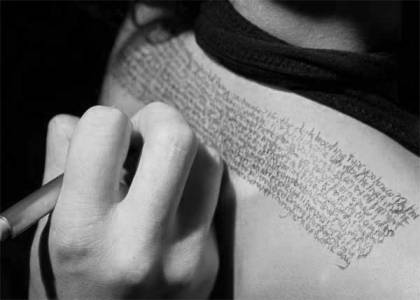
THE BODY AND THE ARCHIVE ARCHIVE
Indeed, contemporary artists have long addressed the archival turn, or “archival impulse” (Foster 2004), whether it be a displaced agglomeration of information requiring (re)activation and (re)interpretation, or the creation of a new archive from fragmentary materials. This is a point we cannot fully address in this special section, but one that deserves further reflection. If the question of the archive is necessarily connected to that of technology, then Ogle ( 2010) argues that through the internet we are all becoming accidental archivists. As such, all contributors draw upon both classic and contemporary literature that theorizes the archive not so much as a “fixed” concept but rather as an experiential, dynamic, and performative practice.Īs American art critic and historian Hal Foster ( 2004) and Nigerian curator Okwui Enwezor ( 2007) pointed out in the early 2000s, the question of the archive in art can be traced back to the invention of photography (and other technologies, from oral histories to music recording). For KFI, see (accessed January 13, 2020).įor this panel, we initially invited contributors to investigate, through means of research and art, the role of the “body” in archival practices-beyond the repositories of historical materials, or the material itself, the “archivable” content (Derrida 1995 Zeitlyn 2012). For the entry on “archive,” see (accessed February 16, 2019). At the Concepts in Art and Anthropology workshop (2015), participants created an open collection of key concepts, including the notion of the “archive.” For the interest group, see (accessed February 11, 2019). The emphasis on process that marked this panel has its roots in our individual practices and collaborative contributions, including the Art and Anthropology interest group (founded in 2012), its Concepts in Art and Anthropology workshop hosted by the Grup de Recerca en Antropologia i Pràctiques Artístiques (GRAPA) in Barcelona (2015), and the Knowing from the Inside (KFI) project, University of Aberdeen, Scotland, led by Professor Tim Ingold. The genesis of this publication began in June 2018 when we co-led a daylong panel at the Royal Anthropological Institute (RAI) Conference Art, Materiality, and Representation, held at the British Museum in London, England, where earlier versions of each article were presented. We argue that archives are not only bodies of documents and knowledge, but also something fundamental to the body the body is an archive, bodies are in the archive, and researchers intervene in either the material bodies of objects, files, or images that make up the archive. The questions tackled here presuppose a notion of archives as something processual, activated, and reactivated by bodies.

This special section interrogates the “bodies” of archives and “archival bodies” in the interdisciplinary field of anthropology and art. We ask: What forms of collaborative work does the archive offer? In what ways can the collective sensibility of the archive be explored? What can we gain from a process-based notion of the archive? What implications does this have on the role of the archive in art and anthropology, and for the practices related to it in particular? Our interest is not limited to objects, but also addresses the idea of the body (or collective bodies) as archives of experience, and the archive’s potential for collaborative artistic and ethnographic practices. This perspective enables us to engage with cleavages and links between past knowledge and future imagination, as well as the role of representation and the anarchive. This special section begins with the premise that archives, prone to decay, dissolution, and rearrangement, are permanently in process. They thereby challenge ideas about the “archive” as a static repository of history. Anthropologists working in collaboration with artists and curators have experimented with forms of archive/archiving, raising important questions about both the collaborative and processual nature of archives.



 0 kommentar(er)
0 kommentar(er)
